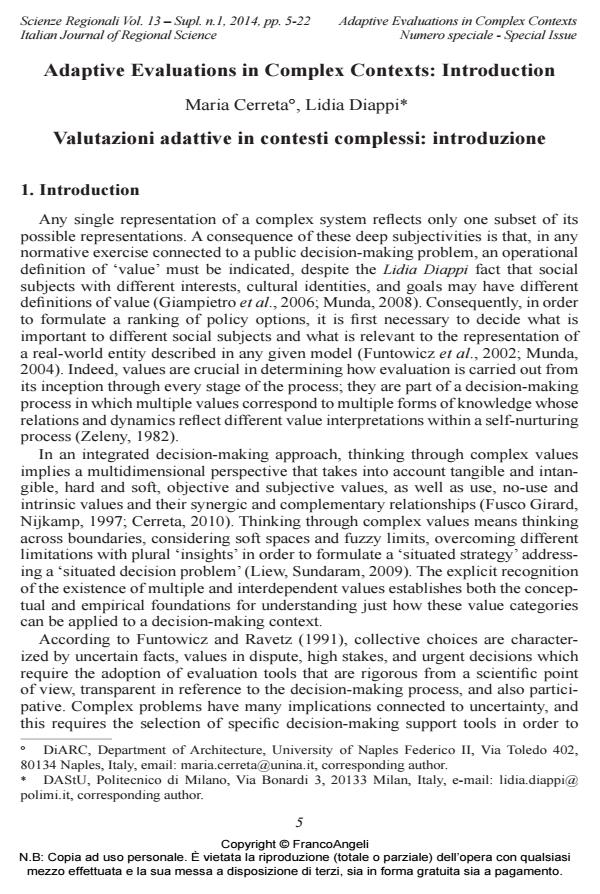Adaptive Evaluations in Complex Contexts: Introduction
Titolo Rivista SCIENZE REGIONALI
Autori/Curatori Maria Cerretta, Lidia Diappi
Anno di pubblicazione 2014 Fascicolo 2014/1 Suppl.
Lingua Inglese Numero pagine 18 P. 5-22 Dimensione file 888 KB
DOI 10.3280/SCRE2014-S01001
Il DOI è il codice a barre della proprietà intellettuale: per saperne di più
clicca qui
Qui sotto puoi vedere in anteprima la prima pagina di questo articolo.
Se questo articolo ti interessa, lo puoi acquistare (e scaricare in formato pdf) seguendo le facili indicazioni per acquistare il download credit. Acquista Download Credits per scaricare questo Articolo in formato PDF

FrancoAngeli è membro della Publishers International Linking Association, Inc (PILA)associazione indipendente e non profit per facilitare (attraverso i servizi tecnologici implementati da CrossRef.org) l’accesso degli studiosi ai contenuti digitali nelle pubblicazioni professionali e scientifiche
- Networks, Markets & People Chiara Mazzarella, Ludovica La Rocca, Sveva Ventre, Maria Cerreta, pp.38 (ISBN:978-3-031-74678-9)
- From Place-Branding to Community-Branding: A Collaborative Decision-Making Process for Cultural Heritage Enhancement Gaia Daldanise, in Sustainability /2020 pp.10399
DOI: 10.3390/su122410399 - Cultural Landscapes: A Multi-Stakeholder Methodological Approach to Support Widespread and Shared Tourism Development Strategies Lucia Della Spina, Claudia Giorno, in Sustainability /2021 pp.7175
DOI: 10.3390/su13137175 - Multidimensional Assessment for “Culture-Led” and “Community-Driven” Urban Regeneration as Driver for Trigger Economic Vitality in Urban Historic Centers Lucia Della Spina, in Sustainability /2019 pp.7237
DOI: 10.3390/su11247237
Maria Cerretta, Lidia Diappi, Adaptive Evaluations in Complex Contexts: Introduction in "SCIENZE REGIONALI " 1 Suppl./2014, pp 5-22, DOI: 10.3280/SCRE2014-S01001